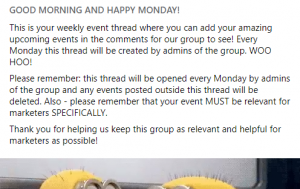
© beornbjorn – Fotolia.com
Have you ever found yourself staring at a computer screen, with your eyebrows scrunched together and your muscles all tensed up because you must finish this blog post today? It’s time to step away from the computer!
We know that mental rehearsal improves performance for athletes and musicians and that mental exercise can advance recovery and functioning during rehabilitation. Can we use this same concept in the blog writing process?
In my experience, we can! Let’s call it mental blogging.
The gift of mental blogging is that it takes you out of a stressful state of mind and body. It gives you access to the abundant flow of creativity inside and outside each of us, and lets you think about your blog post topic when you’re relaxed and free from the pressure to write.
The three things you need for mental blog writing
A written outline
To make the most out of your mental rehearsal time, you must have an outline (a title probably won’t be enough) and/or a set of questions you want to answer about the topic. You don’t need to have it with you at all times; I’ve found that the act of writing or typing the questions and looking them over occasionally helps me remember them.
I don’t need to memorize the exact language from my outline. I just need some notion to float into my head at the precise time that I see a connection or come across a serendipitous fact, idea or story that would complement my blog post in progress.
This is similar to the practice of writing down a problem or question and then setting it aside so your subconscious mind can work on it, while you seamlessly channel the resulting ideas from your intuition, the universe, or a spiritual guide.
Idea catchers
Keep an idea catcher handy to jot down your insights and ideas, but also trust that when you do actually sit down to write, the mental rehearsal process will help you replicate the ideas and calm creativity you experienced when you were away from your desk.
Unlike mental exercise or mental rehearsal, I find that mental blogging must be spontaneous, as your mind wanders naturally to your blog post topic. When that happens, gently guide your thoughts to imagine your blog post taking shape on the page or screen.
Notice the words that appear. You may even see images or colours, which you can translate into text, icons, photos or other graphic elements. Picture your ideal customer having just finished reading the post, and the type of things they’ll be thinking and feeling.
An editorial calendar
The mental blogging process lets a blog post “percolate” over time. That means you can’t be on a tight time line. Ideally, you’ve finished and pre-scheduled at least two or three weeks worth of posts from your editorial calendar. That gives you the freedom and space you need for mental blogging.
If you have several outlines and posts in progress, it opens you up even more to coming across ideas or insights about any one of them.
I know this blogging technique is a little out there, but are you willing to give it a try? What if it meant you could publish more blog posts with less effort? If you do try it, please let me know how it goes!
(337)
Report Post







